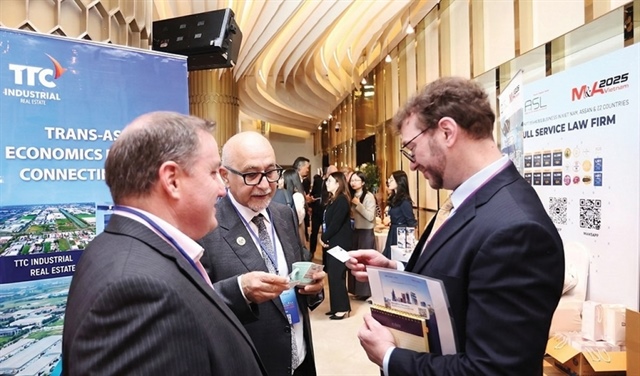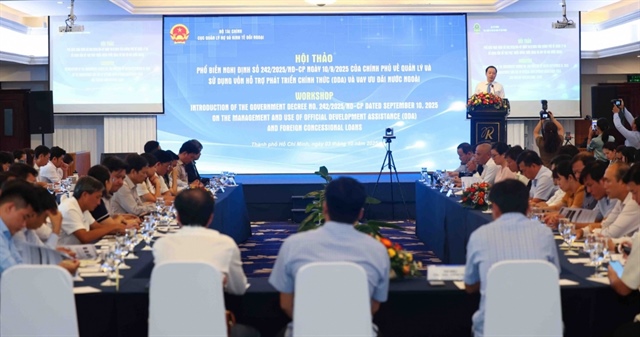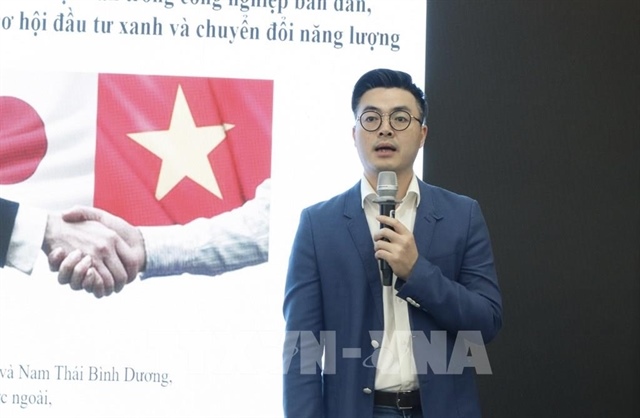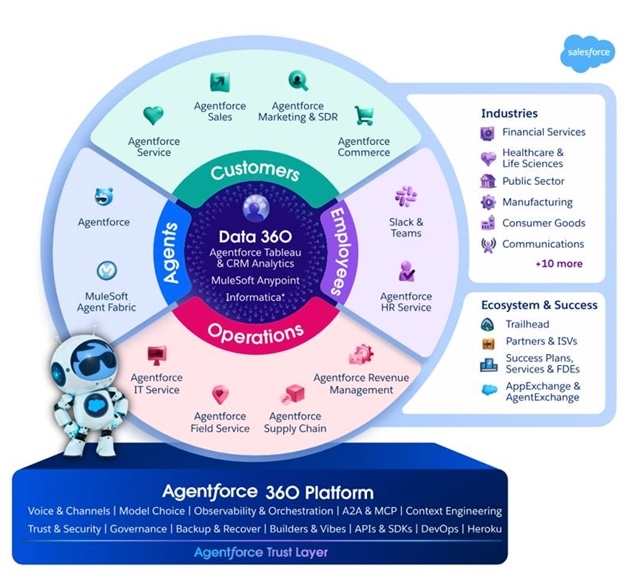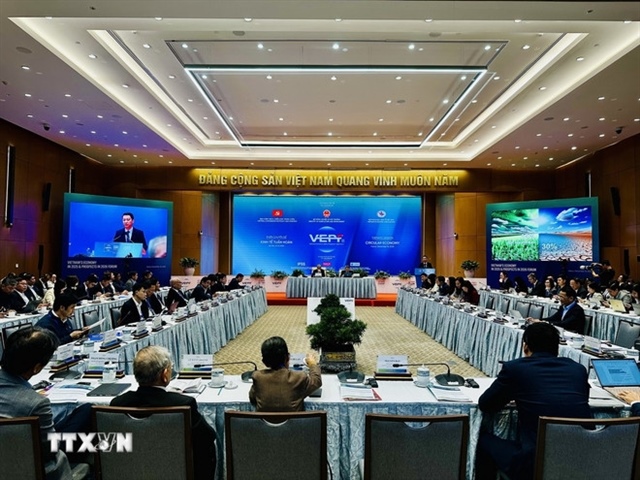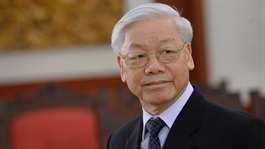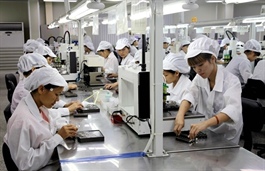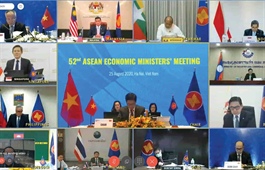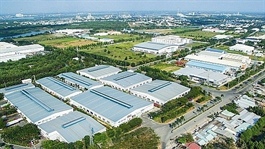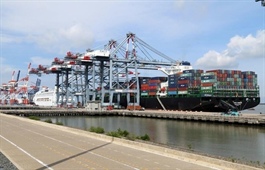Investing regionally amidst current pandemic volatility
Investing regionally amidst current pandemic volatility
Close cooperation is essential in times of crisis and uncertainties and as such, the ASEAN Investment Area Council Meeting last week further cemented its endeavour of promoting intra-regional investment by adjusting the common legal framework, thereby expediting the bloc’s vision of cohesive and proactive partnership.
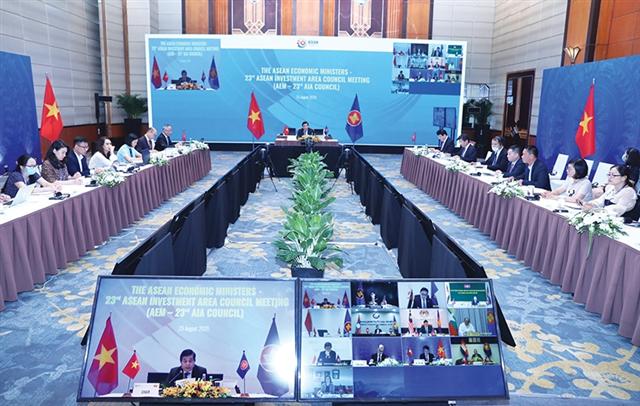
The 23rd AIA Council Meeting took place amid the 52nd ASEAN Economic Ministers’ Meeting last week in Hanoi
|
At the 23rd ASEAN Investment Area (AIA) Council Meeting last week on the sidelines of the 52nd ASEAN Economic Ministers’ Meeting, which was chaired by Minister of Planning and Investment Nguyen Chi Dung, the economic and investment ministers of all 10 ASEAN member states and the bloc’s Secretary General Dato Lim Jock Hoi discussed the region’s strategies for cohesive and sustainable investment cooperation.

The lessons from the pandemic show us the importance of strengthening solidarity, promoting firm development, and building comprehensive mechanisms to cope with global and regional challenges. Minister of Planning and Investment Nguyen Chi Dung
|
At the AIA Council Meeting, participants discussed and finalised legal documents within the ASEAN Comprehensive Investment Agreement (ACIA) to further facilitate intra-regional investment and remove existing barriers to strategic cooperation and promotion. Furthermore, the ministers welcomed the entry into force of the second and third protocol amendments to the ACIA on June 18, after the ASEAN Secretariat received the final ratifications.
Accordingly, the Second Protocol revised the definition of an investor as a natural person in the ACIA to refer to treatment of permanent residents under the agreement. Meanwhile, the Third Protocol amending the ACIA removed Paragraph 8 of the treaty’s guidelines for the application of the reserve list, which provides equal treatment for all investors from ASEAN.
In the case of Thailand, pursuant to the country’s Foreign Business Act, B.E. 2542 (1999), the removal of Paragraph 8 shall not apply to an investor from any other ASEAN state that is either a legal entity or an entity established under the laws of that state and controlled by nationals thereof. This provision will be reviewed annually by the AIA Council.
The ministers also welcomed the signing of the Fourth Protocol amending the ACIA on July 15. This document provides additional notes for the TRIMs-plus, thereby imposing operational requirements on investments within the ACIA. The TRIMs-plus refers to Trade-Related Investment Measures with the addition of some treaties that integrate performance requirements and restrictions that go beyond those under the original TRIMs.
The ministers highly appreciated the efforts of the bloc’s member countries in implementing necessary initiatives to maintain a rapid recovery, openness, further attract new investment and facilitate a business climate to overcome the unprecedented difficulties caused by the pandemic. Moreover, the ministers tasked staff to propose regional initiatives to further facilitate investment in ASEAN and prepare for a post-pandemic landscape.
Introducing policies
The AIA Council took place in the context of increasing trade tensions between major economies and the complicated development of the COVID-19 pandemic, which leaves no economy untouched.
“The lessons from the pandemic show us the importance of strengthening solidarity, promoting a firm development, and building comprehensive mechanisms to cope with global and regional challenges,” Minister Dung said at the meeting.
He believes that promoting investment will contribute to revitalising ASEAN’s economy, creating jobs and enhancing cohesion and strength within the bloc’s business community. “The challenges will be a driving force for ASEAN to actively improve and enhance the attractiveness of its investment environment through the introduction of transparent policies; the development of synchronous and modern infrastructure; and the improvement of human resources and labour productivity,” he said.
The COVID-19 pandemic has further accelerated the existing trend of factories leaving China since the US-China trade tensions intensified. In 2019, a report by the US Chamber of Commerce in China mentioned that about a third of their companies would cancel or suspend investments in the country and that some US businesses would partially or entirely move their production lines from China to other destinations, such as Southeast Asia and Mexico.
Meanwhile, Japan plans to launch a subsidy programme of up to $2.3 billion to encourage its overseas manufacturers to relocate their production to Southeast Asia; and South Korea has confirmed to expand operations in ASEAN as one of its three main strategies to become an international financial hub by 2022, according to its Financial Services Commission’s report.
Analysts said that shifting production from China is heating the competition among ASEAN countries to attract foreign direct investment (FDI). For example, Thailand’s policy focuses on companies that want to move their facilities away from China. The country designed a flexible support package, with details tailored to the needs of investors from different countries, which some think is meant to take advantage of other regional countries.
|
ASEAN has become the fifth-largest economy in the world with a GDP of about $3 trillion in 2018 – a significant increase from its position as the seventh-largest economy in 2013, according to the ASEAN integration report published in November 2019. The ASEAN Economic Community (AEC) was established in late 2015 and marked an important milestone in regional economic integration. The AEC aims to create a common ASEAN market by liberalising the movement of goods, capital, and labour. To further focus on emerging economic issues, such as the digital economy, e-commerce, innovation, and technological advancements, as well as their impact on global value chains and business models, ASEAN has cemented its vision in the AEC Blueprint 2025. It builds on the AEC Blueprint 2015 and comprises of five interrelated and mutually reinforcing characteristics, namely a highly integrated and cohesive economy; a competitive, innovative, and dynamic ASEAN; enhanced connectivity and sectoral cooperation; a resilient, inclusive, people-oriented, and people-centred ASEAN; and a global ASEAN. |
Region of attraction
Dr. Vo Dai Luoc, general director at the Centre for Asia-Pacific Studies Hanoi, called the cooperation between ASEAN’s member states “the right direction to attract FDI from the United States, Europe, and developed Asian economies.”
According to Luoc, as ASEAN comprises “mostly of developing countries, apart from Singapore”, the bloc remains an attractive market not only for global but also intra-regional investment. Up to now, ASEAN members continue to attract FDI from major economies, such as Europe and the US, with Indonesia and Singapore leading the region in venture capital fundraising.
Although capital mobilisation has slowed down in the first quarter of 2020, Indonesia raised $161 million in this timeframe, while Singapore led the region with $865 million, according to the latest report by DealStreetAsia.
“Emphasising intra-regional investment this year presents a firm foundation for the ASEAN economy to thrive more sustainably in the long term,” argued Luoc. “However, in the short term, it will be difficult to focus on this as each member state has certain capital limitations.”
Vietnam, ASEAN’s fastest-growing country, has invested in Laos, Cambodia, and Myanmar, accounting for nearly 40 per cent of the more than $22 billion that have been flowing overseas, according to the Ministry of Planning and Investment’s (MPI) Foreign Investment Agency.
To further accelerate intra-regional trade, the MPI has proposed to the government to promote overseas capital movements by Vietnamese enterprises. Accordingly, Decree No.83/2015/ND-CP released in 2015 on outbound investment allows local busineses to invest abroad by simply registering their investment but without having to apply for a respective certificate.
In addition, the MPI’s Circular No.03/2018/TT-BKHDT enacted in 2018 on promulgating forms used in outward investment standardises legal procedures for offshore investments, thereby creating openness and helping to ensure state agencies effectively manage non-territorial projects.


